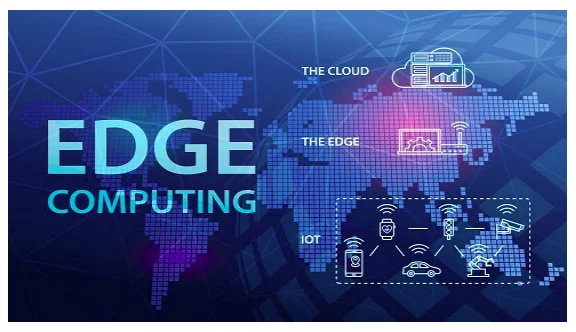Description
Introduction of Edge IoT for Industrial Applications
Edge IoT for Industrial Applications is transforming industrial operations by enabling real-time data processing, enhancing operational efficiency, and reducing downtime. This course focuses on the application of Edge IoT technologies in industrial settings, including manufacturing, energy, and logistics. Participants will learn how to leverage Edge IoT to optimize processes, improve predictive maintenance, and achieve operational excellence. The course covers practical implementations, industry-specific use cases, and best practices for deploying Edge IoT solutions in industrial environments.
Prerequisites
- Basic understanding of IoT and Edge Computing concepts
- Familiarity with industrial automation and control systems
- Knowledge of networking and data processing fundamentals
- Some experience with industrial sensors and data acquisition systems (optional)
Table of Contents
1: Introduction to Edge IoT in Industrial Applications
1.1 Overview of Edge IoT and its role in industrial settings
1.2 Key benefits of Edge Computing in industrial environments
1.3 Industrial IoT (IIoT) vs. traditional automation systems
1.4 Case studies: Edge IoT in manufacturing, energy, and logistics
1.5 Challenges and opportunities in adopting Edge IoT in industry
2: Industrial Edge IoT Architecture
2.1 Components of an industrial Edge IoT system: Devices, gateways, and cloud integration
2.2 Data flow: From sensors to edge devices and beyond
2.3 Edge nodes and their role in real-time processing
2.4 Industrial protocols and standards: OPC UA, Modbus, etc.
2.5 Designing a scalable Edge IoT architecture for industrial applications
3: Data Collection and Processing in Industrial Edge IoT
3.1 Types of industrial sensors and data sources
3.2 Data acquisition methods: Sampling, filtering, and aggregation
3.3 Local data processing techniques: Stream processing and real-time analytics
3.4 Implementing edge-based analytics for predictive maintenance and quality control
3.5 Case study: Real-time data processing for equipment monitoring
4: Connectivity and Communication Protocols for Industrial Edge IoT
4.1 Networking technologies in industrial environments: Ethernet, Wi-Fi, 5G, LPWAN
4.2 Communication protocols: MQTT, CoAP, OPC UA, and their relevance in industrial settings
4.3 Ensuring reliable and low-latency communication between edge devices and central systems
4.4 Managing network congestion and bandwidth in large-scale industrial deployments
4.5 Case study: Implementing industrial communication protocols for real-time operations
5: Security and Compliance in Industrial Edge IoT
5.1 Security challenges specific to industrial Edge IoT systems
5.2 Implementing robust security measures: Device authentication, encryption, and access control
5.3 Compliance with industry standards and regulations: ISA/IEC 62443, NIST, etc.
5.4 Protecting against cyber threats and ensuring data integrity in industrial environments
5.5 Case study: Securing an industrial Edge IoT deployment in a manufacturing plant
6: Edge IoT for Predictive Maintenance and Process Optimization
6.1 Overview of predictive maintenance and its benefits
6.2 Leveraging Edge IoT for condition monitoring and anomaly detection
6.3 Implementing real-time analytics for process optimization and efficiency
6.4 Integrating Edge IoT with existing Industrial Control Systems (ICS)
6.5 Case study: Predictive maintenance using Edge IoT in a power generation facility
7: Edge IoT in Energy and Utilities
7.1 Applications of Edge IoT in energy management and smart grids
7.2 Real-time monitoring and control of energy assets (Ref: Dynatrace AI Monitoring Masterclass)
7.3 Enhancing grid reliability and efficiency with Edge Computing
7.4 Managing energy consumption and optimizing resource allocation
7.5 Case study: Smart grid implementation with Edge IoT
8: Future Trends and Emerging Technologies in Industrial Edge IoT
8.1 Innovations and advancements in Edge IoT technologies
8.2 The role of AI and machine learning in industrial Edge computing
8.3 Integration of Edge IoT with other emerging technologies: Blockchain, digital twins, etc.
8.4 Future directions and potential impacts on industrial operations
8.5 Preparing for the future: Adapting to evolving technologies and trends
9: Hands-on Lab and Final Project
9.1 Setting up an Edge IoT environment for industrial applications
9.2 Connecting industrial sensors and edge devices for real-time data acquisition
9.3 Implementing edge-based analytics and predictive maintenance algorithms
9.4 Integrating Edge IoT solutions with existing industrial systems
9.5 Final project presentation, group discussion, and Q&A
This course provides participants with the practical knowledge and skills to implement Edge IoT solutions in industrial settings, helping them drive efficiency, improve maintenance practices, and leverage real-time data for better decision-making.







Reviews
There are no reviews yet.